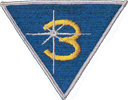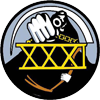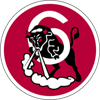Extract from Bill's 40th Reunion Memorial Address, 9 October 2015:
Fellow 1975 Air Force Academy Graduates and relatives and friends of our fallen classmates, welcome to our Memorial Service. For me, this is the most significant, the most moving, the most meaningful, and the most solemn event I will attend this weekend for many reasons. It is the singular event that separates our reunion from most other college reunions. It is one of the primary reasons I flew my children and grandchildren out here this weekend...I wanted them to experience first-hand the camaraderie of our class and the majestic beauty of Colorado. Because of this, it is a great honor for me to stand before you this day and hold high those who have gone before us. The committee who asked me to say a few words today also asked me to keep my remarks to about 7 minutes, so this will not be a long sermon...
Today I’m here to honor our fallen classmates and encourage the family and friends left behind. Jesus said, “No man has greater love than this...that he lay down his life for his friends.” I want to encourage you to finish strong, because whether we want to admit it or not, we are in the 4th Quarter of Life. All of us have separated from the military now, but I would hasten to remind you that we took our Commissioning Oath of Office for life, not only for our length of service. Think positively about the time you have remaining on this earth and touch those that God has put in your path. Stay connected to your classmates and to the families of those who have fallen.
Most of you know that I am a communicator and love to stay in touch with people. But I regret to say that I have lost touch with Cindy McCarth [since found], the wife of our only squadron loss, Capt Dave McCarthy, who died in an F-15 accident at Luke AFB in 1986. Somehow through PCS moves and email address changes, I lost touch with Cindy. That’s sad to me, because she will always be a part of our class and our squadron. Don’t let that happen to you. Make it a priority that in the chaos of life you stay in touch with the family and friends of our class. I am so thankful for those in our class who put together a great website, a network of emails and addresses so we can do this. The Class of '75 probably has better communication than most classes at the Academy because of their efforts. Thank you for doing that for us...
Some of you might have seen the video of Lou Holtz this year, the famous football coach at Notre Dame. He gave a graduation address to a small Catholic University saying to keep things simple. If you haven’t heard this graduation message, take the time to Google it! It is one of the most inspirational speeches I’ve ever heard. In 17 minutes he says many profound things. Most of all, he encourages us to keep things simple. He points out there are only 7 colors in the rainbow but look what Michael Angelo did with these 7 colors. He points out there are only 7 notes on a musical scale, but look what Beethoven did with those 7 notes!
Looking back on his very successful life with 20/20 hindsight and great wisdom, he said that there are only 4 things you really need in life: you need something to do, you need someone to love, you need someone to believe in, and you need something to hope for...And I would tell you that these are the same things you need in the 4th Quarter of life, because we are never promised tomorrow. He followed those 4 principles with 3 rules for life: Do what’s right because that builds trust. Do everything to the best of your ability in the time allotted, and show people that you care...
In your own personal walk of faith in the 4th Quarter, I encourage you to work out your salvation with fear and trembling, have faith, love your family and stay in touch with good friends. And God will do his part as it says in the song, “On Eagle’s Wings”:
“And He will raise you up on Eagle’s Wings, Bear you on the breath of dawn, Make you to shine like the sun, And hold you in the palm of His hand.”
God Bless all those associated with the of Class of 1975, and I pray The Lord will keep His divine hand of protection on us, because we are mere mortals and we need His strength and leadership as we play out the last Quarter of our lives... (Extract from 40th Reunion Memorial Address, 9 October 2015)


















